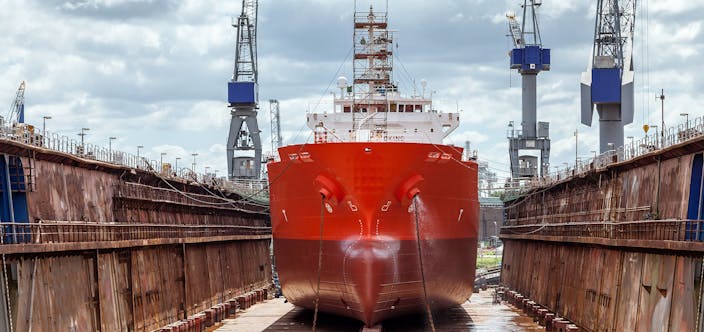Loss prevention that focuses on people
Alandia’s loss prevention work has a new approach within the shipping industry due to a unique mix of professional competencies. Johanna Kull is a social scientist and human factor specialist while Martti Simojoki is a master marine and a former captain. For overall safety, it is extremely important that people feel good and can perform optimally. We help our customers to implement a safety culture that benefits all parties, Martti and Johanna say.

Shipping is a complex operational environment where people and technology are affected by the inner and the outer circumstances alike, as well as a mesh of cultures ranging from national culture to company culture, professional culture, leadership culture, and so on.
– If we look at a representative average loss, it is seldom just one thing gone wrong that has led to the incident, explains Martti Simojoki, Senior Loss Prevention Manager at Alandia.
– It can start with something small. A simple lapse in attentiveness can set off a snowball effect that eventually leads to loss of control and, ultimately, damage. It is our job to try to identify the potential small snowballs and to stop them in time.
– So, when we talk about snowballs, we mean risks. We look at the risks of our clients and assess how likely they are to develop into losses. Together with our clients, we work to create an adequate safety culture within the company. This way, we can lower the claims statistics while making people feel better, says Johanna Kull, Loss Prevention Executive at Alandia.
Alandia’s Loss Prevention has a knowledge pool that is uniquely diverse within the industry. As a former master, Martti Simojoki has deep insight into both daily tasks as well as into the strategic work within shipping. On the other hand, social scientist Johanna Kull is a behavioral expert, who understands how people work and react in different situations. Together, they can detect risks and find solutions on an individual level.
– Losses are rarely caused by technology. They tend to be caused by people – by stress, pressure, anxiety, and fatigue, by miscommunication or weak leadership. Johanna’s expertise is ground-breaking within shipping and marine insurance. A common approach has been to try to eliminate risks by introducing new technology and training, but the human factor has often been overlooked, says Martti Simojoki.
– We use a term coined psychological safety, which means that employees should feel safe in the group they work in. Calling attention to things going wrong should always be encouraged and appreciated. When this kind of trust is present in a working group, it is more likely that losses can be avoided. Furthermore, a company’s safety culture must penetrate all levels, explains Martti Simojoki.
– Even a master must be able to express worry to the shipping company if, for example, unhealthy commercial pressure poses too high a risk. When accidents and incidents take place within shipping, it is common to focus mostly on what has happened instead of why it has happened. To control risks, it is vital to examine why things went wrong, says Johanna Kull. When one dares ask oneself why, the chain of events can often be traced to the people working within shipping operations. When people feel secure, they can perform on an optimal level, which diminishes the risk of something going wrong.
Martti Simojoki continues:
– Personnel costs are one of the largest expenditures for any shipping company. With that in mind, would you want your crew members going about their work without really engaging in it, simply because they are obliged to? Or would you want them to work as a real team, contribute in any way they can and thus improve the safety of the operation as a whole?
Isn’t it especially difficult to start working with safety culture in companies that would need it the most?
– It’s important to remember that regardless of how things are currently in any given shipping company, safety culture work can always be initiated. Even if there are no resources for carrying out a comprehensive transformation, companies can start by supporting logical thinking, focusing on solutions and analysing any incidents that have taken place, says Johanna Kull.
– Working with a safety culture is a win-win. Our clients’ premium costs are based on a calculated risk of loss. When a client’s loss statistics are lower, it not only benefits their economy but also gives a boost to company personnel and safety.
Text: April Kommunikation/Anna Karlsson


